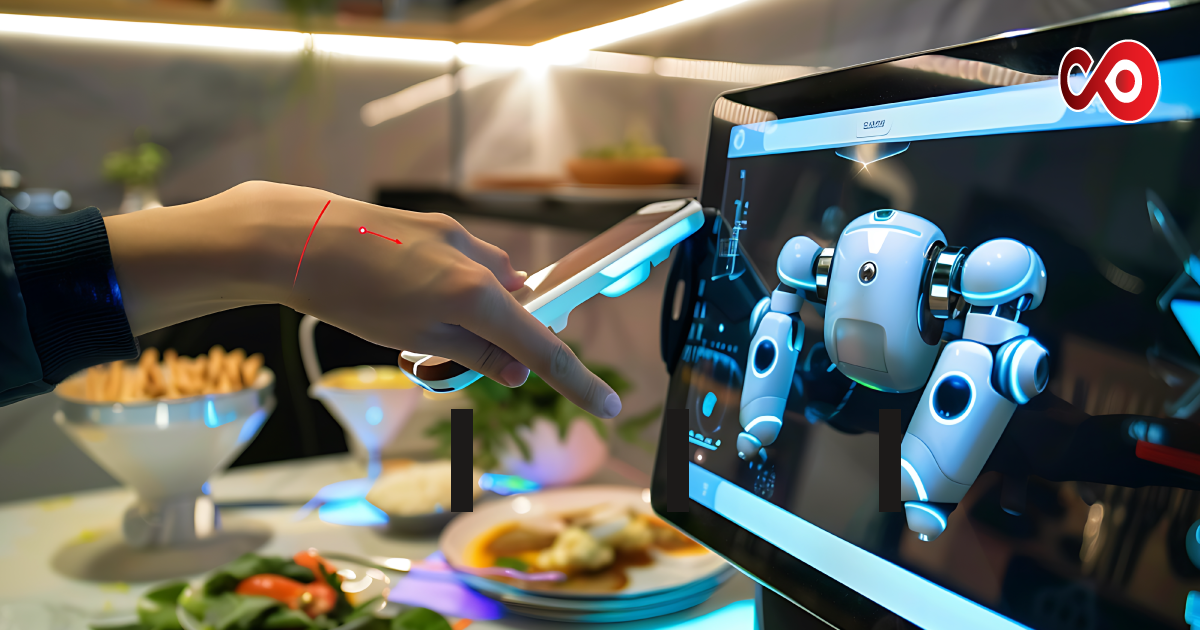The restaurant industry is going through a significant transformation that is driven by advances in artificial intelligence (AI) and automation. From streamlining operations to enhancing customer experiences, these technologies are becoming indispensable tools for modern restaurants. This article explores the impact of AI and automation on restaurant operations, focusing on the integration of online food ordering systems and EPoS systems. This article will provide restaurant owners with valuable insights into how these technologies can revolutionise their businesses.
Revolutionising the Customer Experience with Online Food Ordering Systems
Online food ordering systems have become vital for the operations for any modern restaurant. They offer unparalleled convenience and efficiency to both customers and restaurant owners. These systems enable customers to place orders from the comfort of their homes or on the go, leading to increased sales and improved customer satisfaction.
Benefits of Online Food Ordering Systems
- Increased Order Accuracy: One of the most significant advantages of online food ordering systems is how they help to reduce human error. When customers place their orders directly into the system, there is less chance of miscommunication between them and the staff. This leads to more accurate orders and happier customers.
- Enhanced Customer Convenience: Today’s consumers value convenience more than ever. Online food ordering systems provide a seamless and user-friendly interface that allows customers to browse menus, customise orders, and make payments without any hassle. This convenience often translates into increased customer loyalty and repeat business.
- Data-Driven Insights: Online food ordering systems generate valuable data that can be used to find out more about customer preferences and behaviours. Restaurants can analyse this data to identify popular dishes, peak ordering times, and customer demographics. These insights can inform marketing strategies and menu adjustments, ultimately driving more sales.
- Integration with Delivery Services: Many online food ordering systems seamlessly integrate with third-party delivery services. This integration ensures that orders are quickly and accurately transmitted to delivery partners, reducing wait times and improving the overall customer experience.
Streamlining Operations with EPoS Systems
Electronic Point of Sale (EPoS) systems are another crucial component of modern restaurant operations. These systems go beyond traditional cash registers, offering a wide range of functionalities that bring together various aspects of restaurant management.
Key Features of EPoS Systems
- Inventory Management: EPoS systems provide real-time inventory tracking, allowing restaurant owners to monitor stock levels and automatically reorder supplies when they run low. This feature helps prevent overstocking and understocking, reducing waste and ensuring that popular items are always available.
- Employee Management: Managing staff schedules, tracking hours worked, and processing payroll can be time-consuming tasks for restaurant owners. EPoS systems simplify these processes by automating employee management functions. This allows managers to focus on more critical aspects of running the restaurant.
- Sales Reporting and Analytics: EPoS systems generate detailed sales reports and analytics, giving restaurant owners a comprehensive view of their business performance. These reports can highlight trends, identify top-performing menu items, and pinpoint areas for improvement.
- Integration with Online Food Ordering Systems: When integrated with online food ordering systems, EPoS systems offer a seamless flow of information between the front and back of the house. Orders placed online are instantly transmitted to the kitchen, reducing wait times and ensuring order accuracy.
How AI and Automation in Restaurant Operations Work Together
Combining AI and automation technologies, including online food ordering systems and EPoS systems, creates teamwork that significantly enhances restaurant operations.
AI-Powered Personalisation
AI algorithms can analyse customer data from online food ordering systems to create personalised dining experiences. For instance, the system can recommend dishes based on a customer’s previous orders or dietary preferences. This level of personalisation can make customers more satisfied and loyal.
Predictive Maintenance and Equipment Monitoring
AI can also be used to monitor kitchen equipment and predict maintenance needs. Sensors connected to EPoS systems can collect data on equipment performance, alerting staff to potential issues before they become critical. This proactive approach reduces downtime and ensures that the kitchen operates smoothly.
Optimised Staffing and Scheduling
AI-powered scheduling tools can analyse historical sales data from EPoS systems to predict busy periods and optimise staffing levels. By ensuring that the right number of staff members are scheduled at the right times, restaurants can improve efficiency and reduce labour costs.
Overcoming Challenges and Maximising Benefits
While the benefits of AI and automation in restaurant operations are clear, there are challenges that restaurant owners need to address to maximise these technologies.
Training and Adoption
One of the primary challenges is ensuring that staff members are adequately trained to use new technologies. Restaurant owners should invest in comprehensive training programs to help employees become comfortable with online food ordering systems and EPoS systems. Fostering an innovation culture can also encourage staff to embrace new technologies.
Cybersecurity
As restaurants increasingly rely on digital systems, cybersecurity becomes a critical concern. Protecting customer data and ensuring the security of online transactions should be a top priority. Risks can be mitigated by implementing robust security measures and regularly updating systems.
Future Trends in AI and Automation for Restaurants
The future of AI and automation in restaurant operations looks promising, with several emerging trends poised to reshape the industry.
Voice-Activated Ordering
Voice-activated ordering systems are gaining traction, allowing customers to place orders using voice commands. This technology makes ordering more convenient and accessible, particularly for customers with disabilities. Integrating voice-activated systems with EPoS and online food ordering platforms can streamline the ordering process even further.
AI-Driven Menu Optimisation
AI can analyse customer preferences, dietary trends, and ingredient availability to optimise restaurant menus. By continuously updating menus based on real-time data, restaurants can offer dishes that are both popular and profitable.
Robotic Kitchen Assistants
Robotic kitchen assistants are becoming more common in restaurants. These robots can handle repetitive tasks such as chopping vegetables, cooking, and plating dishes. By automating these tasks, restaurants can improve efficiency and consistency in food preparation.
Takeaway
The impact of AI and automation on restaurant operations is profound and far-reaching. Online food ordering systems and EPoS systems are revolutionising how restaurants operate, enhancing customer experiences, and driving business growth. As these technologies continue to evolve, restaurant owners must stay informed and adapt to stay competitive. By embracing AI and automation, restaurants can streamline operations, increase efficiency, and provide exceptional dining experiences to their customers.





